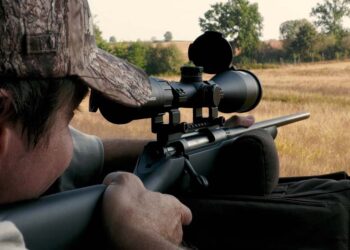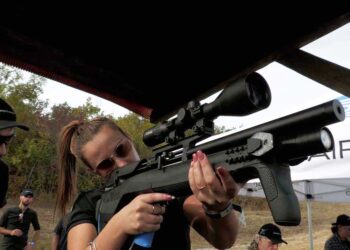Reflections matured over time
The summer period, in which we certainly work, but for a few weeks at a less frenetic pace and with discrete breaks, favors reflection. Or rather, it allows us to put on paper the reflections that we have been feeding for some time. Could one of them be summarized in a sentence such as "where did the wintering go"? We are obviously referring to the wintering of birds and, specifically, of migrants. We have all always known and studied and observed and read that the annual life cycle of migratory bird species is divided into the following phases: pre-nuptial migration, reproduction, post-nuptial migration and wintering. The objective, in relation to the performance of the hunting activity, has always been to avoid as much as possible coincidences and overlaps, for example, with the reproductive period, also because, even before the Birds Directive and Community standards - i.e. well before the EEC was founded and, much later, the EU - it was in the interest of the hunters themselves that the game was left alone to reproduce, even if only for mere interest, or rather so that one could benefit from a more important faunal heritage. Undoubtedly, however, there was much less attention paid to the period of time preceding reproduction, ie that of spring migration, which hunters call “review” in jargon.
The evolution of the legislation
Not for nothing, numerous aquatic migratory species were hunted until the middle, if not the end, of April. Over the decades, the arrival and improvement of Community and Union legislation for the protection of biodiversity in general, has increasingly tightened the snare around many activities, including hunting, first of all limiting the periods of lawful conduct. However, since the Community-Union rules dictate principles and criteria, not being able to contain exact dates that are the same for all the Member States, extensive disputes have arisen for their correct interpretation, with considerable jurisprudential production of the European Court of Justice which was already filed in since the late 80s of the last century. It goes without saying that the law sometimes produces real "legal monsters" that have no parallel in everyday reality, as affirmations of abstract legal principles: unfortunately, however, these monsters, once on paper, create insurmountable difficulties, which require superhuman efforts technically to try to make activities in nature compatible with them, hunting above all. It is from a case of this kind, with the invention of the senseless principle of "complete protection", that in 1994 the Court of Justice gave the rest of the world trouble on the start and closure of the hunting season in EU countries.
The work of the NADEG
Debates, controversies, clashes between categories of stakeholders on opposing barricades arose, until the long and laborious drafting of the well-known Interpretative Guide on the application of Directive 79/409/EEC (today 2009/147/EC), formally adopted by the EU Commission. It is a document of absolute technical-juridical importance, which literally guides individual countries in defining periods of hunting activity in harmony with the needs of the avifauna: in other words, making hunting compatible with the conservation of the fauna resource or, as it is fashionable to say today, “sustainable”. At the same time, the work of the technical group which today is called NADEG (Group of experts on birds and nature directives) and which has absorbed the functions of what was previously the Ornis Committee must be considered. The NADEG is made up of experts representing the individual EU states which, among its tasks, also has the periodic examination of data for the possible updating of the famous decades of reproduction and pre-nuptial migration of the species of avifauna hunted in the 'Union, illustrated and argued in the equally famous document "Key Concepts of Article..." etc. etc. which we all call KC in short terms. And here we return to our original question: where did the wintering go? Simple… it has (almost) disappeared. Especially for some countries (among which, coincidentally, Italy) and above all for species of high hunting interest (again coincidentally). Any examples? Mallard, Teal, Woodcock, Song Thrush, Redwing, Fieldfare ….
Final reflections
The reproductive period perhaps ends in late July or late August, between September and November (even beyond) there is the autumn migration and in the first/second ten days of January the review would begin. Therefore, when or how long do these species overwinter? Twenty days between December and January? From here, to the complete disappearance of this crucial period, the step is very short. We then wonder if, scientifically, all this is correct, as well as serious. It is not a question of wanting to hunt more, on the one hand, and, on the other, of wanting to hunt less. The question we ask ourselves is one of professional ethics: do we realize that we are now at the denial of wintering as an essential biological phase of the migratory life cycle? The birds would go from the post-nuptial migration directly to the pre-nuptial one, after maybe twenty days of hurried relaxation to get through the winter. It is true that, for common sense, "there are no more winters than once", but ornithological science is a completely different thing and does not feed on bar or market chatter. We already know that they would answer us that the "fault" lies with the sentence of the Court that we have cited, for which complete protection also means protecting the first two subjects in pre-nuptial movement: then, it does not count that the massive migration of the overwhelming quantity of birds , maybe start in February or even later. The diktat of the Brussels lawyers must be respected. And these are the reasons why the hunting season is progressively decreasing (although the legal dates have not changed since 1992): to protect the two precocious specimens (assuming they are already in the review), everything closes in the middle of winter. Because in our opinion winter continues to exist, and how. Only the legitimate question remains: is it possible, in the name of an invented legal principle, to change the biology of wild species? Bend science to the courtroom? We have many doubts, others evidently have none. Ornithological science deserves much more respect and much greater intellectual honesty, also and above all from those who have made it their job (source: ANUU).






































